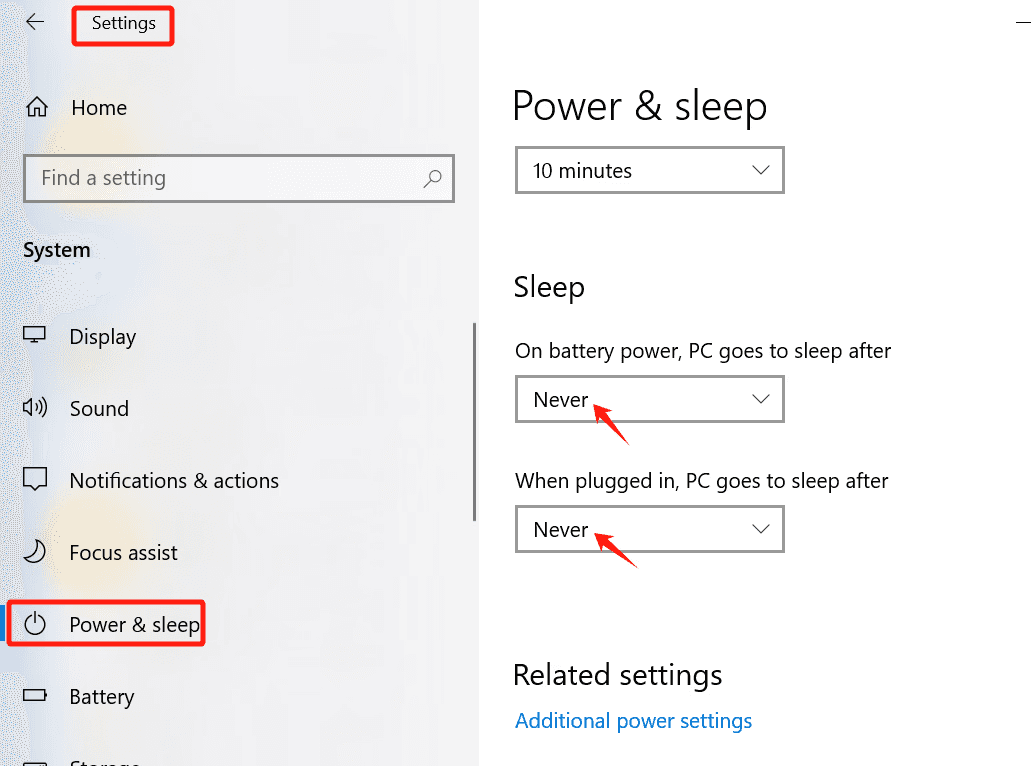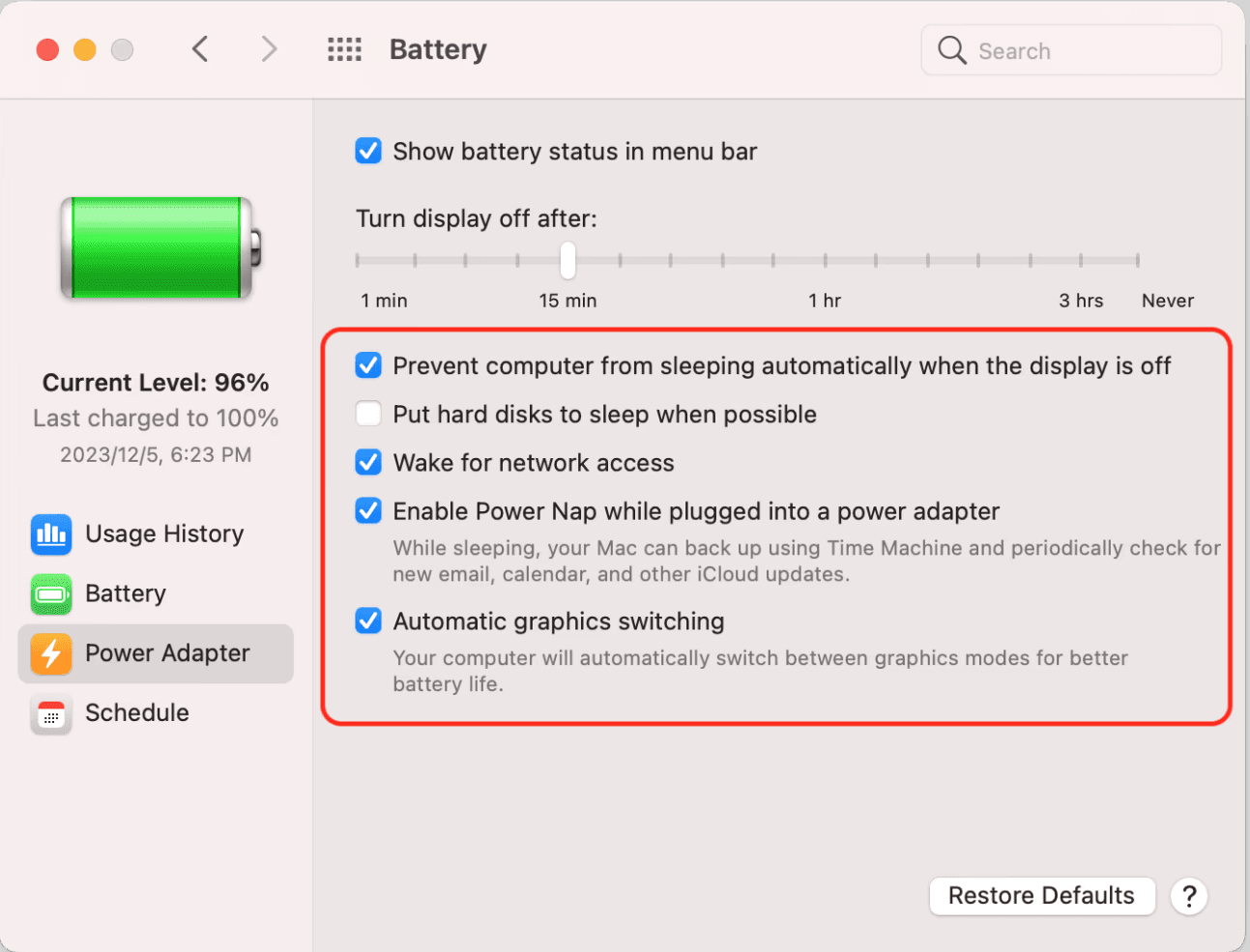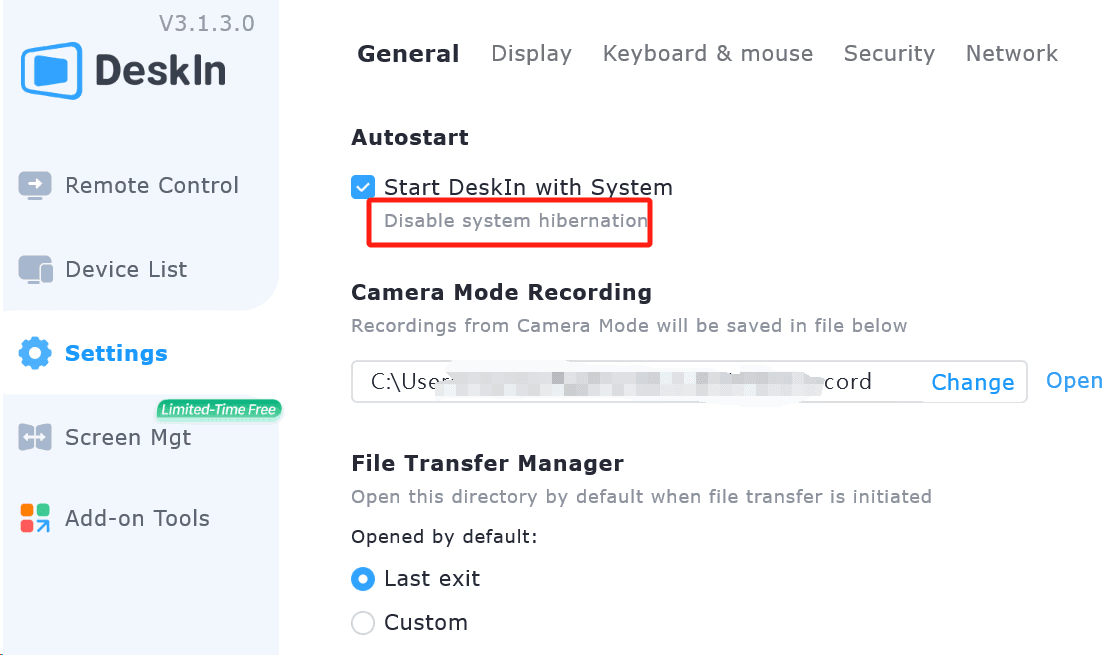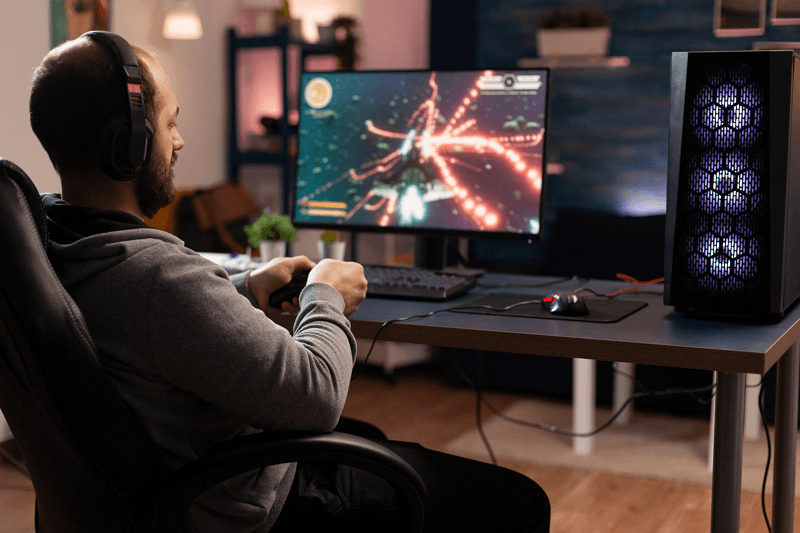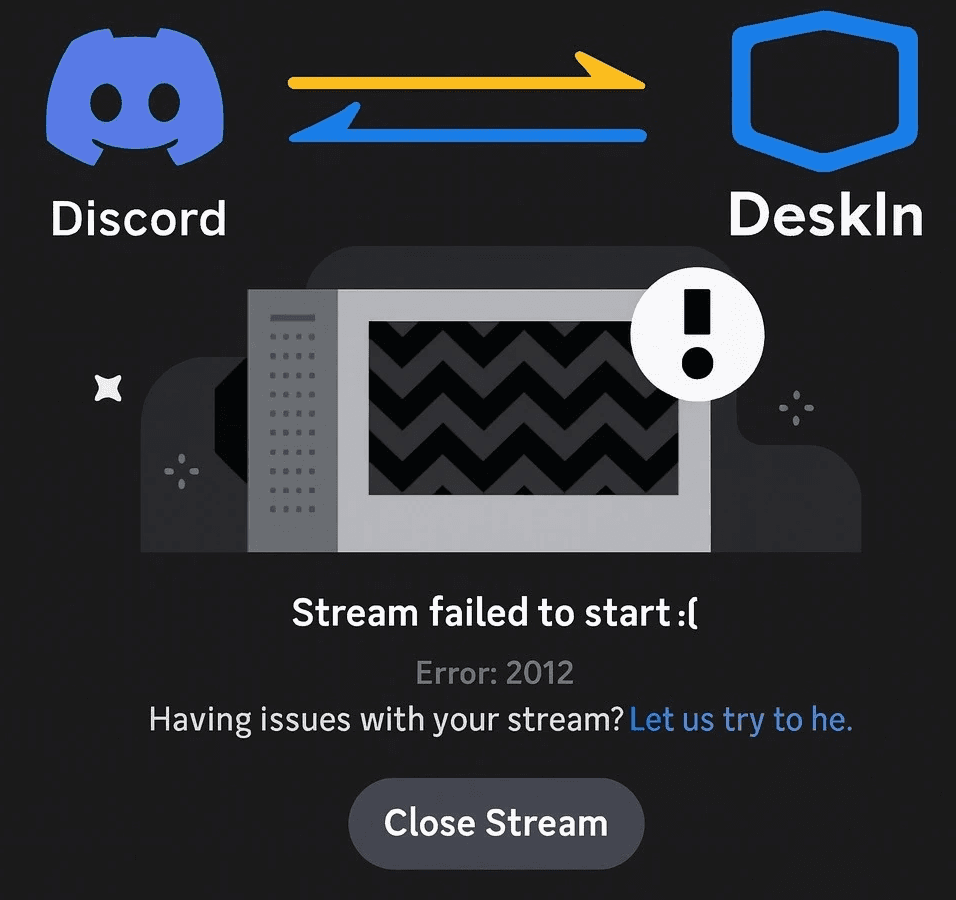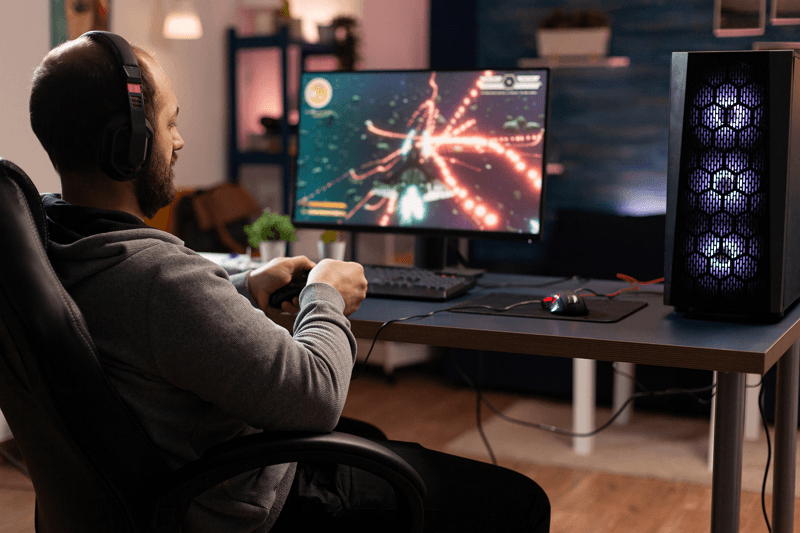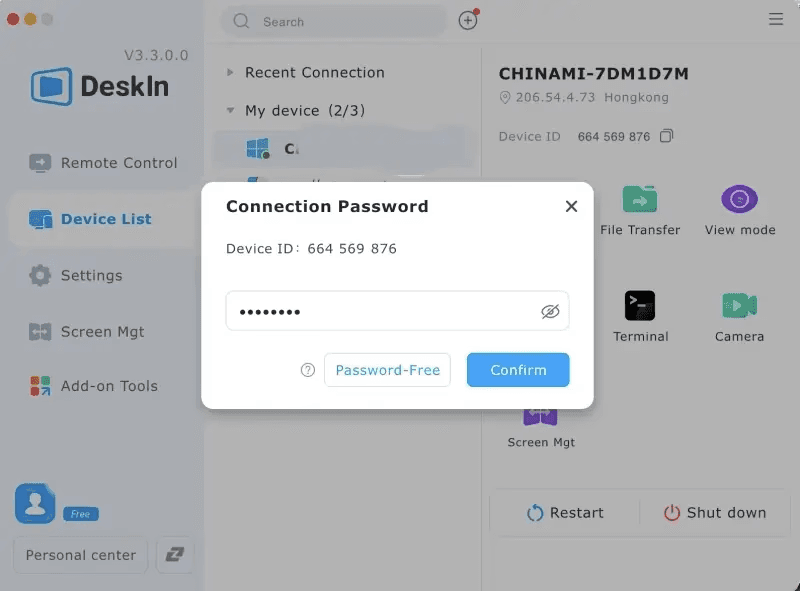Employees increasingly need to access office computers, servers, or specialized software from home or on the go. A simple Remote Desktop Protocol (RDP) setup might seem quick, but this convenience also brings new security concerns, especially when sensitive corporate data travels across public networks.
So, is remote desktop secure by default? The answer depends on how you configure and protect it. In this guide, we'll talk about what risks to watch out for, and how to set up a secure connection by 5 methods. Through these 5 ways, you can remote desktop access securely, but to achieve 100% safe in easiest operations, we highly recommend you to use Alternative method, DeskIn.
More to Discover:
What Are the Risk of Exposing RDP: 6 Common RDP Threats to Avoid
Is RDP secure? Generally, no. RDP, unified as Windows App now, is a transport protocol inherently vulnerable to external attacks due to its design. Common threats include:
Danger Ports & Naked Protocol Tunneling: Exposing RDP ports directly to the internet creates an open bridge for attackers to intercept data, inject malware, or launch disruptive DDoS attacks.
Repeated & Weak Passwords: Simple or reused credentials (like email or social media passwords) are easily cracked or stolen via brute-force attacks, granting instant unauthorized access.
Session Hijacking: Hackers can seize control of active RDP sessions to plant malicious code, steal sensitive data, or sabotage systems undetected.
Server Exploits: Critical vulnerabilities (e.g., remote code execution flaws) in Microsoft's RDP service have historically allowed attackers to bypass security—future risks remain inevitable.
You May Also Need: Why Microsoft Remote Desktop Shutting Down
Way 1. Use VPNs - Useful Warrior

To enhance remote desktop protocol security, VPNs secure RDP access by redirecting traffic through encrypted tunnels and masking the default port 3389, which RDP inherently relies on for connections—thereby preventing hackers from directly intercepting or exploiting this vulnerable entry point.
By rerouting connections through alternative ports and private networks, VPNs effectively shield the exposed "bridge" between users and RDP servers, blocking unauthorized access attempts like brute-force attacks or session hijacking.
Recommended free VPNs for secure RDP: Proton VPN, Windscribe, PrivadoVPN, Hide.me, and Radmin VPN.
You May Also Need: How to Secure Remote Desktop with Ease
Way 2. Apply Firewall Protection - Line of Defense
Firewalls act as a protective barrier around your remote connection, monitoring and filtering incoming/outgoing traffic to block unauthorized access and malicious activities targeting RDP sessions. By restricting open ports and whitelisting trusted IPs, they prevent attackers from exploiting exposed pathways to your system.
Steps to apply firewall protection for securing RDP:
Step 1. Access Windows Firewall
Press Win + R, type wf.msc, and hit Enter to open "Windows Defender Firewall with Advanced Security".
Step 2. Enable the Inbound Rule
Select "Inbound Rules" in the left pane.

Step 3. Define the Type of Rule to Activate
Right-click "Inbound Rules" > "New Rule" > Choose "Port" > Click "Next".

Step 4. Define the Port Type to Activate
Select "TCP" > Enter "3389" (default RDP port) > "Next".

Step 5. Allow or Block the Connection
Select "Allow the connection" > "Next".
Step 6. Define the Firewall Profile & Name to Apply
Check "Domain", "Private", and Public > Name the rule (e.g., "Secure RDP Access") > "Finish".
Way 3. Enable MFA - Extra Security
Multi-factor Authentication (MFA) is a security method requiring two or more verification factors (e.g., password + mobile code) to access resources. Unlike basic logins, MFA adds critical layers—like confirming your identity via phone—drastically reducing breach risks by blocking attackers even if they steal your password.
Steps to enable MFA for secure remote desktop access:
STEP 1: Download Microsoft Authenticator on your mobile (iOS/Android).
STEP 2: On your PC, go to Security Settings > Advanced Security Options > choose "Use an app" for verification.

STEP 3: Open Authenticator, tap + > "Personal Account" > "Scan a QR Code" (point camera at the PC screen).
STEP 4: If scanning fails, select "I can't scan the bar code" on PC > tap "Enter code manually" on mobile > input the PC-generated code.
Way 4. Change RDP port - External Soldier
The default RDP port (3389) is inherently unsafe – it's a publicly known external gateway that attackers constantly scan for vulnerabilities. Malicious actors exploit this open port to intercept connections, steal credentials, or inject malware between your device and the server.
Beyond VPNs, manually changing this port in Windows obscures your entry point, significantly boosting your RDP secure connection against automated attacks.
Steps to change your RDP port:
STEP 1: Pick an alternate port between 1024-49151 (e.g., 3390) – avoid common ports like 80/443.
STEP 2: Connect to your remote Windows machine via RDP.

STEP 3: Press WIN + R > type regedit > hit "Enter".

STEP 4: Navigate to: HKEY_LOCAL_MACHINE\System\CurrentControlSet\Control\Terminal Server\WinStations\RDP-Tcp
STEP 5: Double-click PortNumber > Select Decimal > Replace 3389 with your new port → Click "OK".
STEP 6: Restart your computer to apply changes.
Way 5. Use Access Controls - Reliable Monitor
Windows access controls enforce the principle of least privilege, limiting administrator accounts to essential tasks only. By restricting RDP settings modification and network resource access, they prevent overprivileged accounts from becoming attack vectors—ensuring remote users operate with minimal permissions unless explicitly elevated for specific actions.
Steps to configure User Account Control for Remote Desktop web access security:
STEP 1: Open Control Panel → Start menu → type "Control Panel" → Enter.
STEP 2: Navigate to System and Security → Security and Maintenance → "Change User Account Control settings".
STEP 3 Adjust the slider to one of these levels:
Always notify (most secure: prompts for all system changes)
Notify me only when apps try to make changes (default; dims desktop)
Notify me without desktop dimming (less disruptive)
Never notify (not recommended; disables UAC alerts)

STEP 4: Click "OK" to save.
STEP 5: Confirm with "Yes" in the UAC prompt.
[5 Extra Tips] Improve Secure Remote Desktop Access
Beyond the core strategies we've covered, fortify your defenses further for Remote Desktop security with these 5 critical practices:
Fortify Passwords: Avoid personal or company-related words, and never reuse passwords across logins. Use 12+ character mixes (letters, numbers, symbols).
Enforce NLA (Network Level Authentication): Enable RDP's built-in NLA to require extra proof (smart card, OTP, or biometrics) before sessions start—blocking brute-force attempts.
Implement Lockout Policies: Automatically lock accounts after 3-5 failed login attempts to halt credential-stuffing attacks.
Monitor Active Sessions: Track user activities (logons, commands, file transfers) in real-time to detect anomalies like unusual access hours.
Update Religiously: Patch Windows, RDP clients, VPNs, firewalls, and MFA tools monthly to close exploit windows.
Alternative Way: Use 100% Secure Remote Desktop Tool [DeskIn]
As you can see, some of the above settings are hard to handle, and may bring unpredictable risks to you. If you want enhanced security, collaboration, and cross-platform usability, DeskIn stands out as a smarter choice. It takes remote desktop security to the next level by eliminating the need for exposed public IPs and offering encrypted, secure access with minimal configuration.
Whether you're a small business, a freelancer, or working remotely, this best secure remote desktop tool makes it easier to stay secure and productive from anywhere.

💡 What Makes DeskIn Stand Out:
No Public IP Needed: Access devices through temporary codes or preset passwords, eliminating the risk of exposing your network.
End-to-End Encryption: Secure all connections with robust encryption protocols, ensuring your data stays private.
Whitelist/Blacklist: Control who can access your devices with customizable access lists, ensuring only trusted users can connect.
Privacy Screen: Protect your sensitive information by enabling privacy screen mode during remote sessions.
Cross-Platform Support: Use DeskIn across Windows, macOS, iOS, and Android, ensuring seamless access no matter your device.
File Transfer & Collaboration: Effortlessly transfer files between devices or collaborate with teammates during remote sessions, enhancing productivity.
Here are the detailed steps to use DeskIn to get the most secure remote desktop access on your Windows 10/11.
STEP 1: Start by downloading the DeskIn app for your platform. Install it on both the host and client devices.
STEP 2: Create a DeskIn account, or log in if you already have one.
STEP 3: On the host device, enable remote access via temporary codes or set a preset password for easy access.

STEP 4: To access the remote device, simply enter the temporary code or use the preset password.
After you have connected your computers, you can share files, collaborate in real-time, share screen remotely between Windows and Mac, or use the privacy screen mode to safeguard your sensitive information. DeskIn also allows for multi-device connections, perfect for remote teams or work-from-home setups.
FAQs about Secure Remote Desktop Access
What is More Secure, VNC or RDP?
RDP is more secure by default with native encryption and Windows integration. VNC transmits data unencrypted out-of-the-box, requiring extra tools for security. Both can be hardened, but RDP’s enterprise-grade features make it inherently safer for remote access.
What is the Safest Remote Desktop Software?
DeskIn ranks safest for remote access, eliminating public IP exposure risks. It combines end-to-end encryption with IP whitelisting/blacklisting and privacy screens. These enterprise-grade features deliver unmatched security for sensitive sessions.
Conclusion
Ensuring secure remote desktop access is essential in today's digital landscape. As businesses and remote workers continue to rely on remote access tools, the importance of protecting sensitive data and systems cannot be overstated. By following best practices for remote desktop security, such as using VPNs, applying Firewall protection, and using Access Controls, you can significantly reduce the risk of cyberattacks.
However, manual configuration of built-in features can be complicated, time-consuming, and prone to security gaps. Instead of dealing with the complexities of configuring security settings yourself, consider choosing a solution like DeskIn, which offers a more secure and feature-rich alternative. It provides an easy-to-use platform with end-to-end encryption, whitelisting, and cross-platform support, making it the ideal choice for anyone who values security and efficiency in remote work!
Employees increasingly need to access office computers, servers, or specialized software from home or on the go. A simple Remote Desktop Protocol (RDP) setup might seem quick, but this convenience also brings new security concerns, especially when sensitive corporate data travels across public networks.
So, is remote desktop secure by default? The answer depends on how you configure and protect it. In this guide, we'll talk about what risks to watch out for, and how to set up a secure connection by 5 methods. Through these 5 ways, you can remote desktop access securely, but to achieve 100% safe in easiest operations, we highly recommend you to use Alternative method, DeskIn.
More to Discover:
What Are the Risk of Exposing RDP: 6 Common RDP Threats to Avoid
Is RDP secure? Generally, no. RDP, unified as Windows App now, is a transport protocol inherently vulnerable to external attacks due to its design. Common threats include:
Danger Ports & Naked Protocol Tunneling: Exposing RDP ports directly to the internet creates an open bridge for attackers to intercept data, inject malware, or launch disruptive DDoS attacks.
Repeated & Weak Passwords: Simple or reused credentials (like email or social media passwords) are easily cracked or stolen via brute-force attacks, granting instant unauthorized access.
Session Hijacking: Hackers can seize control of active RDP sessions to plant malicious code, steal sensitive data, or sabotage systems undetected.
Server Exploits: Critical vulnerabilities (e.g., remote code execution flaws) in Microsoft's RDP service have historically allowed attackers to bypass security—future risks remain inevitable.
You May Also Need: Why Microsoft Remote Desktop Shutting Down
Way 1. Use VPNs - Useful Warrior

To enhance remote desktop protocol security, VPNs secure RDP access by redirecting traffic through encrypted tunnels and masking the default port 3389, which RDP inherently relies on for connections—thereby preventing hackers from directly intercepting or exploiting this vulnerable entry point.
By rerouting connections through alternative ports and private networks, VPNs effectively shield the exposed "bridge" between users and RDP servers, blocking unauthorized access attempts like brute-force attacks or session hijacking.
Recommended free VPNs for secure RDP: Proton VPN, Windscribe, PrivadoVPN, Hide.me, and Radmin VPN.
You May Also Need: How to Secure Remote Desktop with Ease
Way 2. Apply Firewall Protection - Line of Defense
Firewalls act as a protective barrier around your remote connection, monitoring and filtering incoming/outgoing traffic to block unauthorized access and malicious activities targeting RDP sessions. By restricting open ports and whitelisting trusted IPs, they prevent attackers from exploiting exposed pathways to your system.
Steps to apply firewall protection for securing RDP:
Step 1. Access Windows Firewall
Press Win + R, type wf.msc, and hit Enter to open "Windows Defender Firewall with Advanced Security".
Step 2. Enable the Inbound Rule
Select "Inbound Rules" in the left pane.

Step 3. Define the Type of Rule to Activate
Right-click "Inbound Rules" > "New Rule" > Choose "Port" > Click "Next".

Step 4. Define the Port Type to Activate
Select "TCP" > Enter "3389" (default RDP port) > "Next".

Step 5. Allow or Block the Connection
Select "Allow the connection" > "Next".
Step 6. Define the Firewall Profile & Name to Apply
Check "Domain", "Private", and Public > Name the rule (e.g., "Secure RDP Access") > "Finish".
Way 3. Enable MFA - Extra Security
Multi-factor Authentication (MFA) is a security method requiring two or more verification factors (e.g., password + mobile code) to access resources. Unlike basic logins, MFA adds critical layers—like confirming your identity via phone—drastically reducing breach risks by blocking attackers even if they steal your password.
Steps to enable MFA for secure remote desktop access:
STEP 1: Download Microsoft Authenticator on your mobile (iOS/Android).
STEP 2: On your PC, go to Security Settings > Advanced Security Options > choose "Use an app" for verification.

STEP 3: Open Authenticator, tap + > "Personal Account" > "Scan a QR Code" (point camera at the PC screen).
STEP 4: If scanning fails, select "I can't scan the bar code" on PC > tap "Enter code manually" on mobile > input the PC-generated code.
Way 4. Change RDP port - External Soldier
The default RDP port (3389) is inherently unsafe – it's a publicly known external gateway that attackers constantly scan for vulnerabilities. Malicious actors exploit this open port to intercept connections, steal credentials, or inject malware between your device and the server.
Beyond VPNs, manually changing this port in Windows obscures your entry point, significantly boosting your RDP secure connection against automated attacks.
Steps to change your RDP port:
STEP 1: Pick an alternate port between 1024-49151 (e.g., 3390) – avoid common ports like 80/443.
STEP 2: Connect to your remote Windows machine via RDP.

STEP 3: Press WIN + R > type regedit > hit "Enter".

STEP 4: Navigate to: HKEY_LOCAL_MACHINE\System\CurrentControlSet\Control\Terminal Server\WinStations\RDP-Tcp
STEP 5: Double-click PortNumber > Select Decimal > Replace 3389 with your new port → Click "OK".
STEP 6: Restart your computer to apply changes.
Way 5. Use Access Controls - Reliable Monitor
Windows access controls enforce the principle of least privilege, limiting administrator accounts to essential tasks only. By restricting RDP settings modification and network resource access, they prevent overprivileged accounts from becoming attack vectors—ensuring remote users operate with minimal permissions unless explicitly elevated for specific actions.
Steps to configure User Account Control for Remote Desktop web access security:
STEP 1: Open Control Panel → Start menu → type "Control Panel" → Enter.
STEP 2: Navigate to System and Security → Security and Maintenance → "Change User Account Control settings".
STEP 3 Adjust the slider to one of these levels:
Always notify (most secure: prompts for all system changes)
Notify me only when apps try to make changes (default; dims desktop)
Notify me without desktop dimming (less disruptive)
Never notify (not recommended; disables UAC alerts)

STEP 4: Click "OK" to save.
STEP 5: Confirm with "Yes" in the UAC prompt.
[5 Extra Tips] Improve Secure Remote Desktop Access
Beyond the core strategies we've covered, fortify your defenses further for Remote Desktop security with these 5 critical practices:
Fortify Passwords: Avoid personal or company-related words, and never reuse passwords across logins. Use 12+ character mixes (letters, numbers, symbols).
Enforce NLA (Network Level Authentication): Enable RDP's built-in NLA to require extra proof (smart card, OTP, or biometrics) before sessions start—blocking brute-force attempts.
Implement Lockout Policies: Automatically lock accounts after 3-5 failed login attempts to halt credential-stuffing attacks.
Monitor Active Sessions: Track user activities (logons, commands, file transfers) in real-time to detect anomalies like unusual access hours.
Update Religiously: Patch Windows, RDP clients, VPNs, firewalls, and MFA tools monthly to close exploit windows.
Alternative Way: Use 100% Secure Remote Desktop Tool [DeskIn]
As you can see, some of the above settings are hard to handle, and may bring unpredictable risks to you. If you want enhanced security, collaboration, and cross-platform usability, DeskIn stands out as a smarter choice. It takes remote desktop security to the next level by eliminating the need for exposed public IPs and offering encrypted, secure access with minimal configuration.
Whether you're a small business, a freelancer, or working remotely, this best secure remote desktop tool makes it easier to stay secure and productive from anywhere.

💡 What Makes DeskIn Stand Out:
No Public IP Needed: Access devices through temporary codes or preset passwords, eliminating the risk of exposing your network.
End-to-End Encryption: Secure all connections with robust encryption protocols, ensuring your data stays private.
Whitelist/Blacklist: Control who can access your devices with customizable access lists, ensuring only trusted users can connect.
Privacy Screen: Protect your sensitive information by enabling privacy screen mode during remote sessions.
Cross-Platform Support: Use DeskIn across Windows, macOS, iOS, and Android, ensuring seamless access no matter your device.
File Transfer & Collaboration: Effortlessly transfer files between devices or collaborate with teammates during remote sessions, enhancing productivity.
Here are the detailed steps to use DeskIn to get the most secure remote desktop access on your Windows 10/11.
STEP 1: Start by downloading the DeskIn app for your platform. Install it on both the host and client devices.
STEP 2: Create a DeskIn account, or log in if you already have one.
STEP 3: On the host device, enable remote access via temporary codes or set a preset password for easy access.

STEP 4: To access the remote device, simply enter the temporary code or use the preset password.
After you have connected your computers, you can share files, collaborate in real-time, share screen remotely between Windows and Mac, or use the privacy screen mode to safeguard your sensitive information. DeskIn also allows for multi-device connections, perfect for remote teams or work-from-home setups.
FAQs about Secure Remote Desktop Access
What is More Secure, VNC or RDP?
RDP is more secure by default with native encryption and Windows integration. VNC transmits data unencrypted out-of-the-box, requiring extra tools for security. Both can be hardened, but RDP’s enterprise-grade features make it inherently safer for remote access.
What is the Safest Remote Desktop Software?
DeskIn ranks safest for remote access, eliminating public IP exposure risks. It combines end-to-end encryption with IP whitelisting/blacklisting and privacy screens. These enterprise-grade features deliver unmatched security for sensitive sessions.
Conclusion
Ensuring secure remote desktop access is essential in today's digital landscape. As businesses and remote workers continue to rely on remote access tools, the importance of protecting sensitive data and systems cannot be overstated. By following best practices for remote desktop security, such as using VPNs, applying Firewall protection, and using Access Controls, you can significantly reduce the risk of cyberattacks.
However, manual configuration of built-in features can be complicated, time-consuming, and prone to security gaps. Instead of dealing with the complexities of configuring security settings yourself, consider choosing a solution like DeskIn, which offers a more secure and feature-rich alternative. It provides an easy-to-use platform with end-to-end encryption, whitelisting, and cross-platform support, making it the ideal choice for anyone who values security and efficiency in remote work!

Play x Work
All at Once
DeskIn Remote Game
only $14.32 USD 🎉 Limited on July 16-31
Add promo code: deskinsummer1






